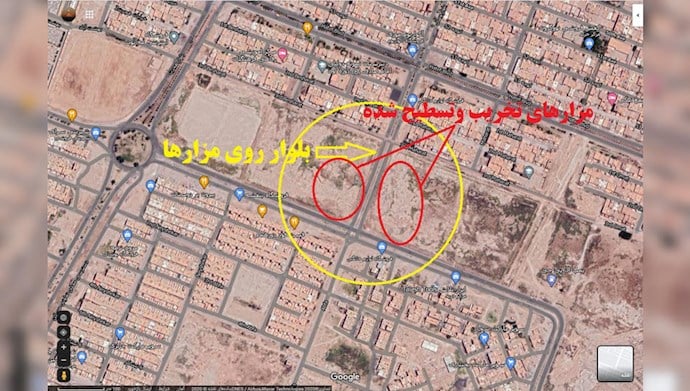 A mass grave of the MEK members in Ahvaz, southwest Iran
A mass grave of the MEK members in Ahvaz, southwest Iran
The People’s Mojahedin Organization of Iran (PMOI/MEK) reported on Friday that the mullahs’ regime has destroyed a mass grave in Ahvaz, southwest Iran, where many victims of the 1988 massacre were buried. The regime intends to conceal its crime against humanity, and the world should prevent this.
Reports indicate the Iranian regime has started to construct a boulevard on this place. This boulevard, which connects Besharat Street to Beheshtabad Boulevard and the Mahdis neighborhood, will lead to the destruction of the mass grave of the victims of the 1988 massacre between Mahdis and Phase 5 of Padadshahr.
As the issue of the 1988 massacre of over 30,000 political prisoners continues to draw attention at an international level, the Iranian regime intends to conceal what many experts describe as the “worst crime against political prisoners since World War II.”
The MEK network inside Iran, after three days of investigation created a documentary video about this mass grave, also known as ‘Khavaran of Ahvaz.’ MEK supporters had checked the area several times with a car. A local truck driver told them of the site of the mass grave of the 1988 martyrs, mostly MEK members.
“Khavaran” are the names of areas across Iran were victims of the Iranian regime, particularly those who perished in the 1988 massacre, have been buried. These areas have many points in common, including desolation, lack of names and symbols, the absence of gravestones and tombs, and in some cases the existence of mass graves in them.
In a report published on June 1, 2017, Amnesty International had warned about the destruction of a mass grave of 1988 victims in Ahvaz. “The desecration of a mass grave site in Ahvaz, southern Iran that contains the remains of at least 44 people who were extrajudicially executed would destroy vital forensic evidence and scupper opportunities for justice for the mass prisoner killings that took place across the country in 1988,” read the report.
The new report obtained by the MEK once again suggests the Iranian regime’s intention to destroy any evidence of its most heinous crime. The international community must initiate an independent investigation about the 1988 massacre and hold the perpetrators of this crime to account.
The international community’s silence about the 1988 massacre has emboldened the regime to continue its human rights violations. Iran’s current Judiciary Chief Ebrahim Raisi and Justice Minister Alireza Avaei were both members of the so-called “Death Commissions” which carried out the executions.
Background
In the summer of 1988, the Iranian regime summarily and extra-judicially executed over 30,000 political prisoners held in jails across Iran. The massacre was carried out based on a fatwa by the regime’s then-Supreme Leader Ruhollah Khomeini. Many of the victims were members and supporters of Iran’s main opposition group Mujahedin-e Khalq or MEK. On August 9, 2016, relatives of Hossein-Ali Montazeri, Khomeini’s former heir, published a shocking audio tape in which Montazeri can be heard telling a meeting of members of the “Death Commission” (on August 15, 1988) that they are carrying out a crime against humanity.
Khomeini issued fatwas (religious decrees) ordering the execution of anyone who had not “repented” and who was not willing to collaborate entirely with the regime. The massacres began, and everyday hundreds of political prisoners were hanged, and their corpses were buried hurriedly in mass graves all over major cities, in particular Tehran.
Khomeini decreed: “Whoever at any stage continues to belong to the Monafeqin (the regime’s derogatory term to describe the PMOI/MEK) must be executed. Annihilate the enemies of Islam immediately.” He went on to add: “Those who are in prisons throughout the country and remain steadfast in their support for the MEK/PMOI are waging war on God and are condemned to execution.”


Aucun commentaire:
Enregistrer un commentaire